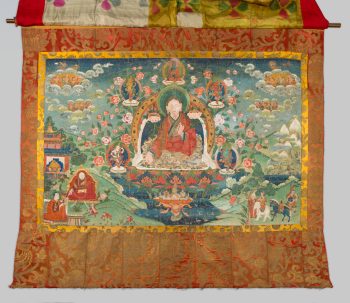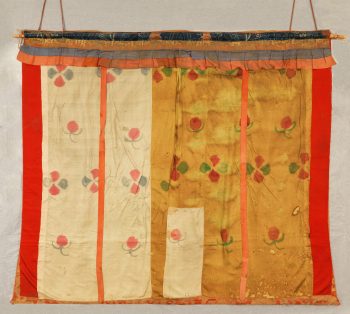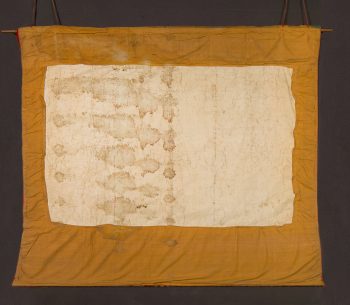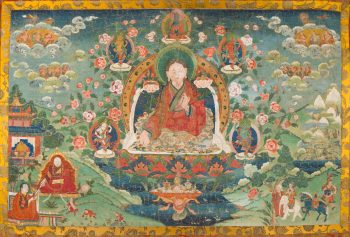Tibet
19th century
The right hand is extended in a giving gesture.
Tibet
19th century




At the center of this large painting is Yuthog Yonten Gonpo, the twelfth-century Tibetan physician credited as the editor or author of the Four Tantras and other important medical and Buddhist treatises. This painting depicts Yuthog with a blossoming lotus flower that supports a book and sword, both symbols of wisdom, in his right hand and the stem of another lotus flower supporting a vase of medicinal nectar topped with precious jewels in his left. Above him is the Medicine Buddha, and he is surrounded by four female bodhisattvas. This work includes details related to medical practice, such as the transmission of a medical text from teacher to disciple and the picking of medicinal plants (bottom left).
While the primary religious goal for followers of Buddhism is enlightenment, many of the practices also serve secular goals related to daily life, including ethical conduct and cultivating well-being.
The passing down of authentic Buddhist teachings from a teacher to a disciple or student, often in the form of a text in a ritualistic context.
The transmission of teachings from one generation to the next, from teacher to student, traced all the way back to the Buddha without interruption. A complete lineage is essential in Tantric Buddhist practices as it makes the blessings of the teaching more powerful.
Himalayan art includes portraits of legendary and historical humans, including accomplished religious teachers (lamas), the Buddha’s original disciples (arhats), and spiritually accomplished tantric masters (mahasiddhas).
Today, Tibetans primarily inhabit the Tibetan Plateau, situated between the Himalayan mountain range and the Indian subcontinent to the west, Chinese cultural regions to the east, and Mongolian cultural regions to the northeast. During the 7th to 9th century, Tibetan rulers expanded their empire across Central Asia, and established Buddhism as the state religion.
Get the latest news and stories from the Rubin, plus occasional information on how to support our work.